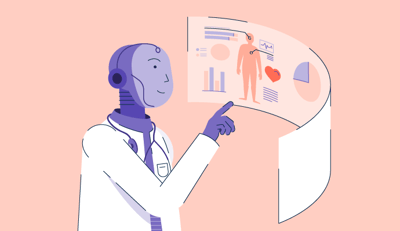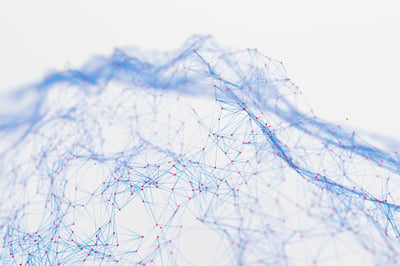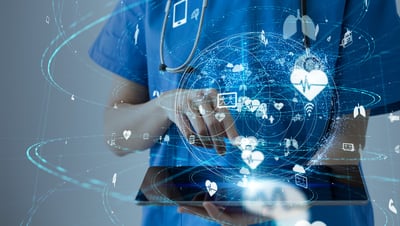June 19, 2024
 by Ilan Hertz / June 19, 2024
by Ilan Hertz / June 19, 2024

Can data save lives? It can, and it is saving lives.
If you are wondering how healthcare data analytics is your answer. Data analytics is the use of analytics software to extract valuable insight from big datasets.
Data analytics in healthcare analyzes medical data collected by healthcare organizations to identify patterns and trends that help with clinical decision-making to improve patient care and optimize healthcare resource management to reduce costs.
Healthcare analytics software is part of that technology, helping healthcare organizations to not only save lives, but also time and money. It puts to use the troves of big data available from legacy systems, medical health records, and public databases, ushering in a new era of data-driven healthcare.
There are four types of data analysis that are used in general by any analytics software, and all four types are used in healthcare data analytics for different applications. Here's how.
Descriptive analytics is the easiest form of analytics. It uses statistics and data mining to examine historical data and understand what has happened in the past to reveal trends and patterns. By analyzing historical and patient data, descriptive analytics helps healthcare providers understand existing and ongoing health concerns and optimize resource allocation by analyzing the use of equipment, supplies, and staff.
Diagnostic analytics answers the question, "Why did something happen?" using extensive data analysis. For example, if descriptive analytics revealed higher patient wait time in emergency rooms, diagnostic analytics can be used to determine what factors cause the increase in wait time: is it patient-related, care provider-related, or operational issues? This can be used to reduce ER crowding and improve efficiency.
Predictive analytics goes a step further than descriptive analytics to answer the question "What's likely to happen in the future?" based on the analysis of historical and current datasets. Predictive analytics heavily relies on machine learning (ML) and artificial intelligence (AI).
Examples in healthcare include predicting a patient's risk of developing a certain disease, identifying patients at high risk of complications after surgery, or forecasting potential outbreaks of infectious diseases. Predictive analytics can also be used for resource management by healthcare organizations.
Prescriptive analytics, as the name suggests, prescribes the best course of action to reach particular goals based on trends and patterns identified with predictive, descriptive, and diagnostic analytics. It also uses sophisticated ML algorithms.
Prescriptive analytics can be used to suggest optimal treatment plans, resource allocation strategies, or preventive care interventions based on patient data and predicted outcomes. This type of analytics is still evolving but holds great promise for personalized medicine and optimized healthcare delivery.
There is yet another type of analytics called discovery analytics that uses data analytics exclusively to discover new drugs, identify new diseases, and develop alternative treatment strategies.
Data analytics in healthcare relies on a vast pool of big data that comes from various sources within the healthcare system. Here's a breakdown of the key data sources used:
To understand how data analytics is transforming the healthcare industry, here are five key applications that are making a significant impact.
When it comes to monitoring a patient’s vital signs and sounding the alarm when danger looms, data analytics have a big advantage. They are always on. No change in a patient’s condition will escape them, day or night. Better still, data analytics can spot downtrends early in cases where human caregivers are less able or too busy to predict and prevent crises.
For example, the condition of child patients in the cardiac ICU of the Boston Children’s Hospital in the U.S. can change suddenly and significantly. Data analytics, and more specifically bedside predictive data analytics, help keep young patients alive by bringing together data from different bedside monitors in a single at-a-glance ‘stability index’ to show each patient’s condition overall.
Data analytics is also used in hospitals at the time of patient admission. It helps staff assess risk and select the treatment that is best aligned with the patient’s condition and profile. With additional input from national guidelines, data analytics and data visualization through healthcare dashboards can provide reliable, easy-to-understand risk-level indications for operations or other caregiving actions.
Picking out insights about specific illnesses from healthcare data and zooming in on probable causes are two further strengths of data analytics. At a macro level, data analytics boosts efforts in the fight against cancer and the development of preventative measures against heart disease and diabetes.
At a micro or individual patient level, it gets results faster than the cumbersome checklist diagnosis in which a physician must plow through lists of points to check a patient’s condition.
At the Icahn School of Medicine at Mount Sinai in New York, data analytics is helping staff see the crucial difference between two otherwise very similar heart conditions.
While the final call still falls to a human physician, data analytics algorithms process and analyze large quantities of cardiac ultrasound data to help doctors make the right diagnosis. By making the data analytics program and its healthcare dashboards available remotely, smarter heart medicine could then be available to even the most resource-constrained health centers.
Data analytics are powerful number-crunching tools. However, interactions in healthcare between people don’t happen in binary code. They take place using natural language, like the words on this page. NLP, a blend of data analytics and ML, lets a computer make sense of natural language. This also means that the power and speed of computer systems can be used to tackle the mountains of natural language notes in patients’ health records, as well as from patient satisfaction surveys and recordings of interviews and operations.
A research study has used NLP to analyze the EHR data of over 100,000+ patients to assess and predict the rate of hospitalizations for worsening heart failure among them.
Ideally, a patient leaving a hospital should never need to go back. However, readmissions can happen. It is then in everybody’s interest – patient, caregiver staff, healthcare insurer – to keep them to a minimum. Corewell Health is using predictive analytics to reduce hospital readmissions, by analyzing data to predict which individuals faced a more difficult recovery after their hospitalization and creating a plan to help them after discharge.
Similarly, hospitals can use detailed data from health records and data analytics to spot patients likely to need readmission. By identifying this factor early in the patient’s initial hospitalization, the staff can organize care to prevent the need to return where possible. Data analytics also allow healthcare institutions to assess their performance over time. This makes value-based reimbursements more accurate and fairer, encouraging the institutions to further reduce readmissions.
Targeting prevention and cure, healthcare establishments can use data analytics with data sources like Google Maps and free public health data to visualize hot spots for population growth or concentrations of specific diseases. They can then strategically adapt their skillsets, resources, and services to manage these changing situations.
During the COVID-19 pandemic, many governments and health organizations used big data analytics for different applications ranging from predicting outbreaks, detection, and diagnosis of infected patients to what measures would curb the spread and planning future action.
Healthcare data analytics comes with many challenges, including data quality, privacy, and skilled workforce, which hinder realizing its full potential.
Healthcare data can be messy! Inconsistent formats, missing entries, and errors across different healthcare systems that lack interoperability often hinder the accuracy and reliability of data analytics. Such fragmented healthcare systems, along with privacy concerns, also make it difficult to share and integrate data from various sources, limiting the comprehensiveness of analysis.
More than 5,000 healthcare data breaches of 500 or more records were reported between 2009 and 2023, exposing healthcare records equal to 1.5x the population of the United States of America. Stringent regulations and robust cybersecurity measures, including encryption, and using healthcare risk management software, are essential to prevent such data breaches and ensure patient privacy.
Effectively utilizing data analytics requires skilled professionals who can interpret complex health data, build robust models, and translate insights into actionable recommendations. However, there's shortage of data analysts who can understand healthcare data.
Implementing and maintaining data analytics infrastructure requires significant investment in technology like cloud data storage, data lakes, data warehouses, and big data analytics software technology, as well as in training, and ongoing data management processes. Further, such data should be secured to comply with regulations like the Health Insurance Portability and Accountability Act (HIPAA).
Despite these challenges, healthcare organizations can benefit from data-driven insights by investing in a robust data analytics infrastructure.
New approaches to data analytics and the systems that run them mean that healthcare establishments can gain advantages without needing to hire an army of data scientists. Non-data specialists can explore data through intuitive healthcare dashboards and ask ad hoc questions as they like. This is another reason why data analytics is being used today in many practical healthcare applications.
The success of the establishments and healthcare analytics described above is, therefore within the grasp of many healthcare organizations, allowing them to optimize the use of their resources
Interested in learning more? Read how AI is transforming healthcare from experts.
This article was published in 2018. It has been updated with new information.
Ilan Hertz is Head of Lead Generation at Sisense, the leader in simplifying business intelligence for complex data, offering a powerful business intelligence software. Ilan uses his domain expertise and data-driven methodologies to lead digital marketing efforts at Sisense.
You go to the hospital for a routine checkup. When you enter the doctor's office, reception...
 by Soundarya Jayaraman
by Soundarya Jayaraman
Businesses are well aware of the data they possess on their customers, marketing campaigns,...
 by Devin Pickell
by Devin Pickell
The healthcare industry rests on one important pillar: data. Without the collective knowledge...
 by Elena Prokopets
by Elena Prokopets
You go to the hospital for a routine checkup. When you enter the doctor's office, reception...
 by Soundarya Jayaraman
by Soundarya Jayaraman
Businesses are well aware of the data they possess on their customers, marketing campaigns,...
 by Devin Pickell
by Devin Pickell


